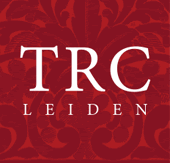Fragments of ancient Greek textiles have been discovered. The studies that have been made of these fragments are sometimes inconclusive or contradictory. The fragments from the Kerameikos cemetery in Athens, for example, were originally found to contain extremely rare (for Greece) silk fibres; a more recent analysis found no silk, but bast and possibly cotton fibres (Margariti and Kinti, 2014: Chapter 7).
Each textile discovery adds to our knowledge about the materials and techniques used. The discovery of the Koropi fragments showed that the ancient Greeks did employ embroidery techniques, something many scholars had doubted.. Wool and linen are the most common materials found; but there are others. At Kastelli Khania, on Crete, a small carbonized ribbon was found made of linen, goat hair and (perhaps) nettle fibres. The site was dated to the Late Bronze Age (Moulherat, C. and Spantidakii 2009: 8-15).
In 1875, textiles were found in burial mounds, called the Seven Brothers, near Kertch in the Crimea. These mounds are associated with the Greek Black Sea colony of Panticapaeum (also known as Pantikapaion). In Kurgan 6 some fifty fragments of a large woollen textile were discovered, draped over a wooden sarcophagus. This textile was made from at least eleven long bands stitched together. It was painted or resist-dyed in red, black and fawn colours, with scenes of running women, warriors, and at least two chariots drawn by horses. Some of the human figures are identified on the textile in Greek letters. The names Athena, Nike, Iocasta, Phaidra and Mopsos can be made out. It has been speculated that this textile may have been a wall hanging, perhaps in imitation of a more expensive woven tapestry, before it was used as a pall (von Hofsten, 2011:16). The textile had been carefully mended at some point.
Inside the sarcophagus, over the legs of a body, more textile fragments were found. These fragments belonged to a woollen tapestry with a design of polychrome ducks on a red background. Stags’ heads decorate the border. Based on other artefacts in the tomb, all the textiles were dated to the early 4th century BCE.
Other textiles have been found in the area. Fragments from the near-by Pavlovskij kurgan reveal a purple-reddish woollen textile. This textile was heavily embroidered in yellow-white, black and green colours, with palmettes and other plant motifs, a mounted rider and spiral waves. This textile has been dated to the mid-4th century BCE.
 Early 5th century BC textile fragments, from Koropi, near Athens, Greece. Courtesy Victoria & Albert Museum, London, acc. nT.220 to B-1953o. On the Greek mainland, a small fragment of embroidered linen was found inside a bronze water jar at Koropi, near Athens, in Attica. The design was a diaper pattern with small lions in the centre of each lozenge. The threads were all Z-spun and the gold and silver embroidery threads had been wrapped around a fibre core (perhaps silk or linen). These fragments are now at the Victoria and Albert Museum in London (acc. T.220 to B-1953). The fragments were dyed green, with a tapestry or plain weave. They have been dated to 500-440 BCE. The fragments helped establish the fact that the ancient Greeks did have knowledge of embroidery techniques, something which had previously been doubted by scholars.
Early 5th century BC textile fragments, from Koropi, near Athens, Greece. Courtesy Victoria & Albert Museum, London, acc. nT.220 to B-1953o. On the Greek mainland, a small fragment of embroidered linen was found inside a bronze water jar at Koropi, near Athens, in Attica. The design was a diaper pattern with small lions in the centre of each lozenge. The threads were all Z-spun and the gold and silver embroidery threads had been wrapped around a fibre core (perhaps silk or linen). These fragments are now at the Victoria and Albert Museum in London (acc. T.220 to B-1953). The fragments were dyed green, with a tapestry or plain weave. They have been dated to 500-440 BCE. The fragments helped establish the fact that the ancient Greeks did have knowledge of embroidery techniques, something which had previously been doubted by scholars.
Other textiles come from a 1936 excavation of a grave (number 35 HTR 73) at the Kerameikos cemetery in Athens. A copper vessel was discovered wrapped in straw and wide purple ribbons, inside a sarcophagus. Inside the vessel were fragments of a textile decorated with stripes of purple on its corners. Some fragments were a plain weave, others weft-faced. Some fragments had selvedges and a starting edge, which indicates it was woven on an upright loom, perhaps the warp-weighted loom. The threads are single-ply with a Z-twist. As mentioned above, earlier analysis indicated the material was silk, but the latest analysis shows bast and possibly cotton fibres. The fragments are dated to between 430-400 BCE.
The most famous recent find is perhaps the 4th century BCE funerary pyre textile from the Royal Tomb II in Vergina. This tomb is associated with King Philip II of Macedonia, the father of Alexander the Great. Fragments of a tapestry woven, possibly woollen, textile were discovered in the tomb’s antechamber. In the centre of the textile is a floral design with two birds; the border has a meander motif. The textile was woven with gold and mollusk purple thread. The gold appeared to be “cut strips with no indication that they were spun around a core.” (Andrianou 2012: 46).

